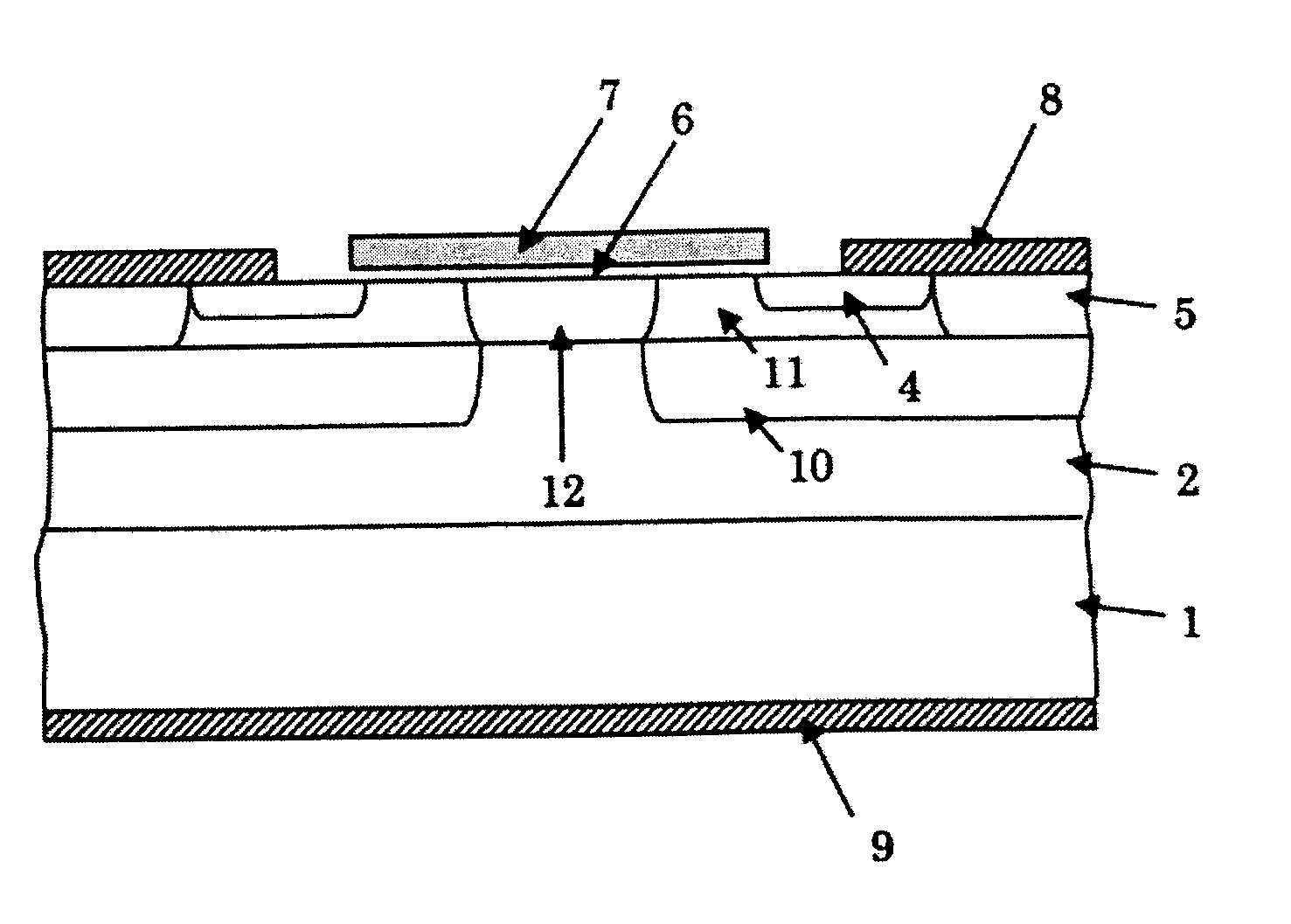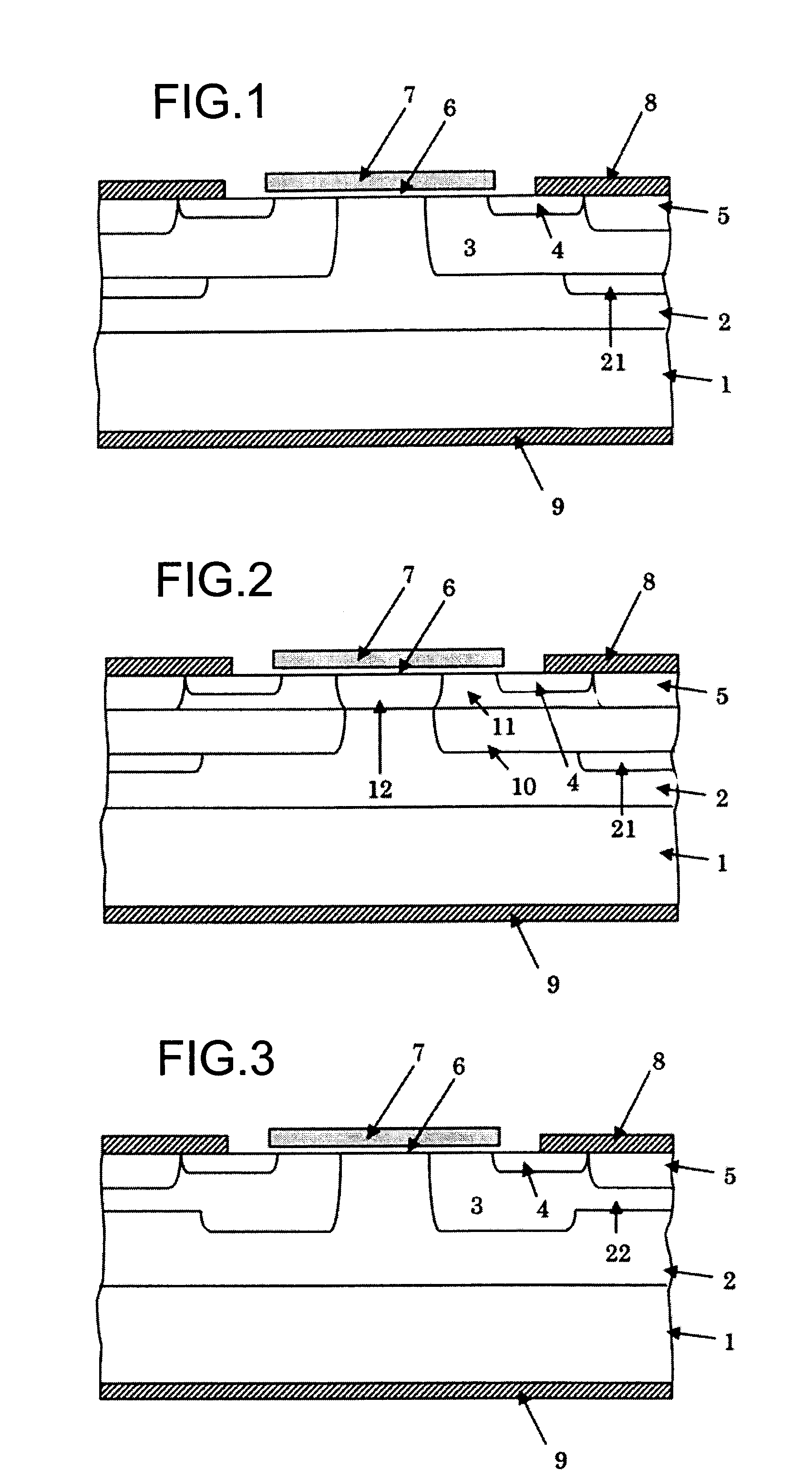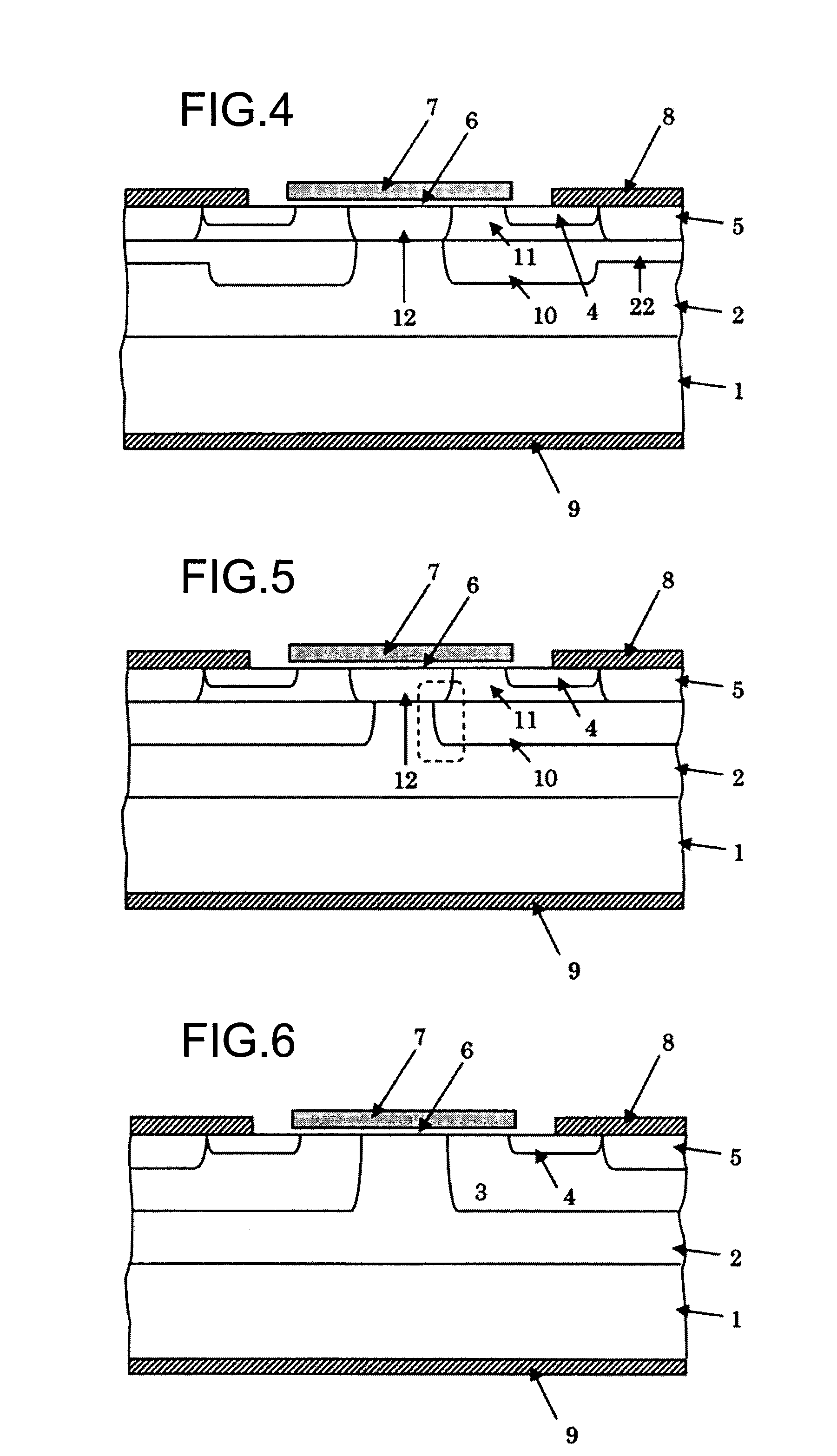Silicon carbide vertical field effect transistor
a technology of vertical field and transistor, which is applied in the direction of diodes, semiconductor devices, electrical apparatus, etc., can solve the problems of significant reduction of gate insulating film reliability and high voltage applied to drain electrodes, and achieve the improvement of gate insulating film reliability and gate insulating film breakdown resistan
- Summary
- Abstract
- Description
- Claims
- Application Information
AI Technical Summary
Benefits of technology
Problems solved by technology
Method used
Image
Examples
first embodiment
[0028]FIG. 1 depicts a cross-sectional view of a MOSFET structure according to the first embodiment of the present invention. Although a first conductive type is an N-type and a second conductive type is a P-type in the embodiments, the conductive types can be reversely formed.
[0029]In FIG. 1, an N-type SiC layer 2 is formed on a surface of an N-type SiC substrate 1 and multiple P-type regions 3 are formed on a surface of the N-type SiC layer 2.
[0030]An N-type source region 4 and a P-type contact region 5 are formed on a surface of the P-type region 3. A source electrode 8 is formed on surfaces of the N-type source region 4 and the P-type contact region 5.
[0031]A high-concentration P-type region 21 is formed under the P-type region 3. A gate electrode 7 is formed, via a gate insulting film 6, on surfaces of the P-type regions 3 and the N-type SiC layer 2 interposed between the N-type source region 4 on the surface of the P-type region 3 and an N-type source region 4 on a surface of ...
second embodiment
[0034]FIG. 2 depicts a cross-sectional view of a MOSFET according to a second embodiment of the present invention. The N-type SiC layer 2 is formed on a surface of the N-type SiC substrate 1 and multiple P-type regions 3 are formed on the surface of the N-type SiC layer 2. A P-type SiC layer 11 is further formed on the surface. An N-type region 12 is formed in the P-type SiC layer 11 to reach the N-type SiC layer 2.
[0035]The N-type source region 4 and the P-type contact region 5 are formed on a surface of the P-type SiC region 11. The source electrode 8 is formed on the surfaces of the N-type source region 4 and the P-type contact region 5.
[0036]A high-concentration P-type region 21 is formed under the P-type region 3. A gate electrode 7 is formed, via a gate insulting film 6, on surfaces of the P-type regions 3 and the N-type SiC layer 2 interposed between the N-type source region 4 on the surface of a P-type region 3 and an N-type source region 4 on a surface of another P-type reg...
third embodiment
[0038]FIG. 3 depicts a cross-sectional view of a MOSFET according to a third embodiment of the present invention.
[0039]Although the basic structure is the same as the first embodiment, a difference from the first embodiment is in that a thin P-type region 22 is formed in a portion of the P-type region 3 without forming the high-concentration P-type region 21.
[0040]The MOSFET formed in this way also causes an avalanche to occur in the PN-junction portion between the high-concentration N-type SiC layer 2 and the thin P-type region 22 when high voltage is applied to the drain electrode without a large electric field being applied to the gate oxide film, resulting in the insulation breakdown resistance and the reliability of the gate insulating film exhibiting the same characteristics as the first embodiment.
PUM
 Login to View More
Login to View More Abstract
Description
Claims
Application Information
 Login to View More
Login to View More - R&D
- Intellectual Property
- Life Sciences
- Materials
- Tech Scout
- Unparalleled Data Quality
- Higher Quality Content
- 60% Fewer Hallucinations
Browse by: Latest US Patents, China's latest patents, Technical Efficacy Thesaurus, Application Domain, Technology Topic, Popular Technical Reports.
© 2025 PatSnap. All rights reserved.Legal|Privacy policy|Modern Slavery Act Transparency Statement|Sitemap|About US| Contact US: help@patsnap.com



